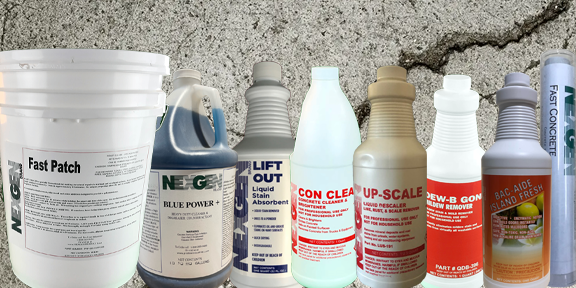Uncategorized
Concrete Maintenance and Care
Concrete is care free and maintenance free, correct? Well, not exactly. In most cases concrete is a durable, long-lasting product without much maintenance. Properly maintaining concrete, however, can greatly extend the life and the beauty of the concrete. Plain concrete can look clean and bright and decorative concrete can look the same after years of use as it did when it was brand new. Properly maintaining concrete protects your investment.
Keeping Concrete Looking Like New
Clean concrete on a regular basis to remove normal dirt and grime build up, rust and other stains. You’ll have a sense for how often you need to clean it based on how it looks and how difficult it is to do your thorough cleanings.
- Mold and mildew should be removed as soon as possible since it can become a safety issue when left untreated, as it is slippery. Industrial cleaners that have a preventive additive will help reduce future mold and mildew and save labor later on.
- A pool deck should be cleaned thoroughly to prevent buildup of sunscreens and lotions which can cause discoloration and even a slippery surface if allowed to build up. Clean the entire pool deck using a pressure washer, it will go a lot faster than using a hose or trying to clean it by hand. Use a cleaning solution that contains a degreaser for removing lotions and oil buildup, and scrub brush to get rid of mildew and rust spots with a commercial cleaner. Use a scrub brush to rub the cleaner into the spot until it is released from the surface. Remove items left by guests that are made of metal from your pool deck. Even small objects such as bobby pins can create rust stains on your deck.
- Dog urine and other organic stains can be tough to remove from concrete, the best cleaner to use is one with bleaching action or ammonia. Then treat with a bacteria product to remove any residual odors.
- Fertilizer from your lawn or planters can leave stains on concrete. The ingredients in fertilizer penetrate and react with the cement and can cause a permanent color change. You can use concrete cleaners specifically designed to remove stains, this should lift the discoloration from the concrete.
Repair cracks in a timely manner to help reduce additional damage caused by water penetration.
Repairing cracks helps to maintain a structurally sound surface and minimize water intrusion through cracks-which can cause problems with the sub grade. It also reduces trip and fall potential plus keeps dirt from building up and weeds from sprouting in the cracks. Holes and cracks in concrete porch steps should also be repaired as soon as possible to avoid a tip and fall situation. Use a repair patch that is designed for added strength on edges and corners. Concrete reacts to changes in temperature and changes in humidity, expanding and contracting as the weather changes. Those thermal movements may likewise result in cracks in the concrete. It is normal and typical for cracks to occur on the surface of concrete. Typical concrete construction includes reinforcing steel embedded within the concrete to add tensile strength to the structure. Cracks in the concrete surface allow moisture from rain, fog or even humidity to penetrate below the surface of the concrete to reach the embedded steel, causing it to rust. As steel rusts, the rust expands, exerting outward pressure on the concrete encasing it. The pressure of the expanding rust pushes the cracks open further, allowing more water down to the rebar and accelerating the rusting process in a vicious cycle. Also, the use of deicing chemicals on new concrete which has not had ample amount of time for internal moisture to dry out can cause premature cracks. Avoid using deicing chemicals on your concrete for the first winter. Sand or traction grit can be used for traction. Promptly remove snow and ice accumulation manually from your concrete.
Sealing the Concrete Surface Repels water, helps to maintain a cleaner surface, provides resistance to abrasion and to damaging UV rays.
Did you know?
The terms “concrete” and “cement” are sometimes incorrectly used interchangeably, but they are not the same thing. Cement is a component of concrete, along with an aggregate (sand, gravel or rocks), water and sometimes other additives. The cement binds the aggregate together in a paste, which hardens to a stone-like material as the water dissipates out of the mixture. It is the mix of components that provides concrete with the strength and durability.

